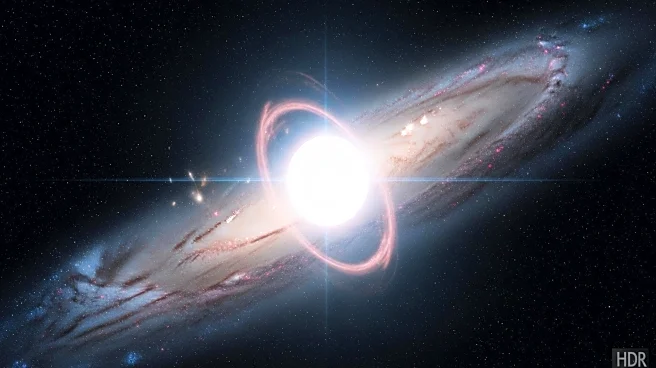What is the story about?
What's Happening?
Astronomers have identified a significant development in the V Sagittae star system, located approximately 10,000 light-years from Earth. This system comprises a white dwarf and its companion star, which orbit each other every two Earth days. Recent research indicates that the white dwarf is on the verge of a catastrophic explosion, potentially becoming a supernova visible from Earth even during daylight. This revelation answers questions about V Sagittae that have persisted for over a century. The white dwarf is currently accumulating material from its companion star, forming an accretion disk. This process is expected to push the white dwarf past the Chandrasekhar limit, leading to a Type Ia supernova.
Why It's Important?
The potential supernova in the V Sagittae system is significant for both scientific and observational reasons. A supernova visible during the day would provide a rare opportunity for astronomers to study such an event in detail. This could enhance understanding of stellar evolution and the processes leading to supernovae. Additionally, the event could capture public interest, highlighting the dynamic nature of the universe. The findings also underscore the importance of monitoring binary star systems, as they can offer insights into the life cycles of stars and the mechanisms behind supernova explosions.
What's Next?
While the exact timing of the supernova is uncertain, astronomers will continue to monitor the V Sagittae system closely. The accumulation of material on the white dwarf suggests that a nova outburst could occur in the coming years, making the system visible to the naked eye. Researchers will likely use various telescopes and observational tools to capture data before, during, and after the explosion. This data will be crucial for refining models of stellar behavior and supernova mechanics.
AI Generated Content
Do you find this article useful?















